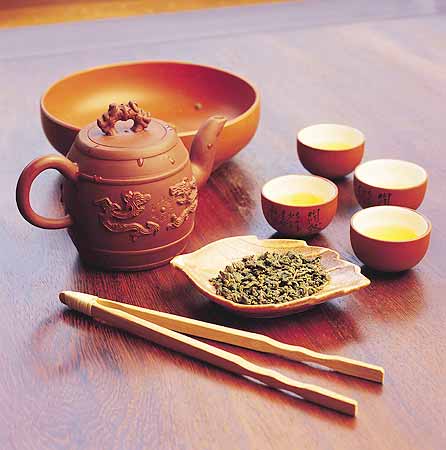The Maliandao Tea Street
Updated: 2007-05-29 11:49

There are six key differences that make Maliandao stand out from other tea markets. First, the Maliandao tea market developed spontaneously. It wasn't planned as a tea-market area. In the 1950s, there was only one shop, but with the loosening of agricultural policies in China, tea traders from all around the country began to open stores on Maliandao because of its convenient location. This trend lasted until the late 1990s. Observing this, starting in 1999, the Beijing Business Commission and the Xuanwu District government cooperated to repair the road and improve the environment in order to encourage the growth of the street.
Second is the special tea culture that has developed around the street. Tea stores are decorated in both modern and antique styles, and in most places customers can taste the tea first and bargain the price with the owner. There are also tea sets, curios, calligraphy and paintings in many tea stores for customers to see and appreciate. The owners are also likely to be full of interesting facts about tea culture for the interested visitor.
Third is the combination of culture and travel. In order to welcome the 2008 Olympic Games the tea street is trying to attract tourists by branding itself as a tea mecca. A statue of the Tea Sage Lu Yu and his Book of Tea has been erected in the middle of the street, which was unveiled during the first Tea Culture Festival. People now compare Maliandao Tea Street to the Ancient Tea Horse Road , which linked China to other nations through the tea trade for thousands of years. Maliandao carries on this spirit.
Fourth, Maliandao Tea Street has recently been honored by the government as The Commercial Street with Chinese Characteristics, the only street that has won the honor in Beijing. On April 23, 2005, Maliandao held a grand unveiling ceremony, erecting a gold-lettered signboard with The Commercial Street with Chinese Characteristics inscribed. Now, commercial facilities covering more than 100,000 sq m have been built along the street, attracting many well-known enterprises such as Carrefour, B&Q and Beijing Audio-Visual.
Fifth is the development of other new industries. The development of the tea industry made for tremendous growth in spin-off industries such as tea sets, tea packaging, transportation, tea ceremony, root carving, tea foods and even tea footbaths.
Sixth is the Maliandao Purchasing Center. Currently the government of Xuanwu District is planning to construct a purchasing center in Maliandao that will cover 82 hectares. It will be divided into five areas including an international purchasing and exhibition area, tea industry purchasing area, brand commercial area, health care area and a books and education area. This will help Maliandao to further develop as an important logistics hinge for Beijing.

